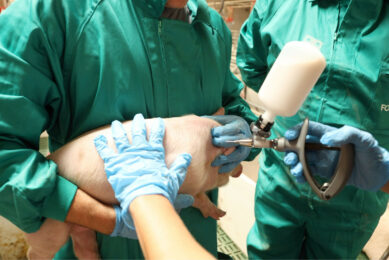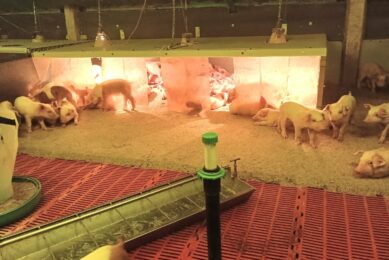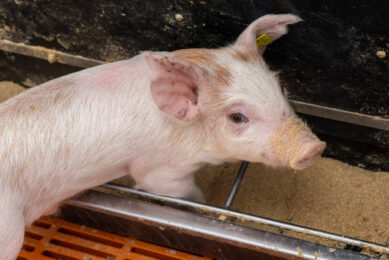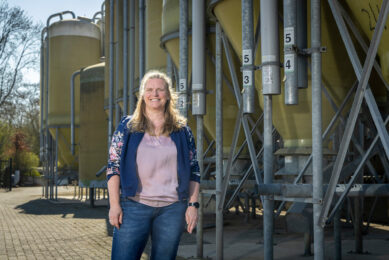Parity number affects the frequency of farrowing assistance
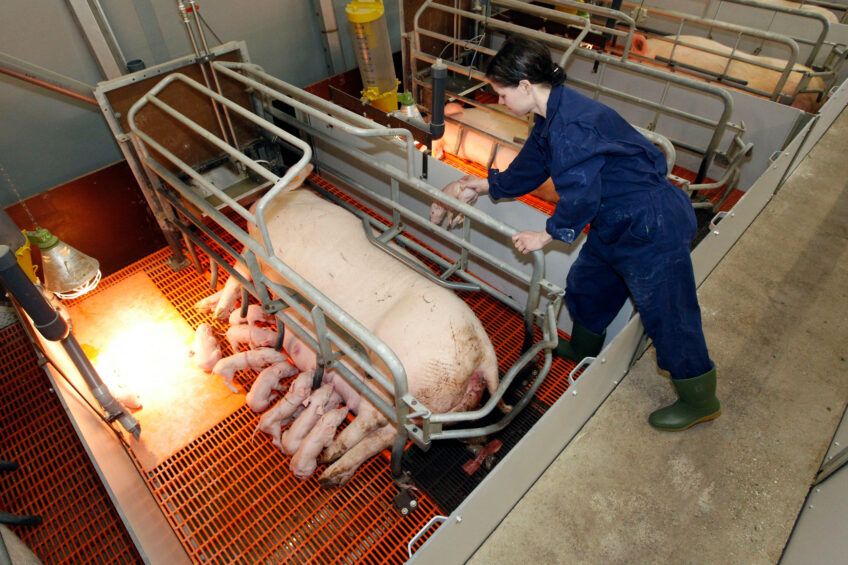
How often do sows require assistance at farrowing? And are there any risk factors associated with farrowing assistance? Researchers from Thailand recently delved into this question.
A team of researchers from Chulalongkorn University published their findings in the journal Animal Bioscience in January 2024. After all, the questions are very relevant given the increasing numbers of hyperprolific sows being used.
The team selected 352 sows and 5,554 piglets for the trial. They classified sows into 4 groups according to their parity number. They divided the litters into 3 groups according to the total number of piglets born per litter. They recorded the incidence of farrowing assistance, farrowing duration, birth interval, percentage of stillborn piglets per litter, colostrum yield and intake, and characteristics of sows or piglets that required assistance and those that were born naturally without assistance.
Farrowing assistance incidence
In the commercial herd, 29.8% of hyperprolific sows required farrowing assistance, and 8.4% of the piglets were born after manual intervention. On average, 4 piglets per litter needed birth assistance. Sows with low parity numbers had a lower frequency of farrowing assistance than sows with high parity. In addition, the number of piglets that required birth assistance in sows with low parity was lower than the ones in sows with high parity.
Farrowing duration and birth interval
The farrowing duration in sows with high parity was longer than sows with low parity. The birth interval of piglets in primiparous sows was shorter than other sows. In addition, the birth interval of piglets in the litters with more than 17 piglets born was shorter than the litters with 10-13 piglets born.
Colostrum yield and intake
Primiparous sows had the lowest colostrum yield and sows with parity numbers 2 to 4 had the highest colostrum yield. Colostrum intake of piglets in primiparous sows was lower than piglets of other sows.
Characteristics of sows and piglets requiring assistance
The farrowing duration of sows that required assistance was longer than sows that farrowed without assistance. Piglets that required intervention had a longer birth interval than piglets that did not require assistance. The birth interval of piglets that required farrowing assistance was longer than piglets that did not require assistance. Piglets born from sows that required farrowing assistance consumed less colostrum than piglets from sows who farrowed without assistance.
The authors concluded that the frequency of farrowing assistance was influenced by parity number. In addition, they suggested to minimise the number of sows with parity numbers more than 7 to decrease the need for farrowing assistance.
The article in Animal Bioscience was authored by Napatsawan Wongwaipisitkul, Yanwarut Chanpanitkit, Natthacha Vaewburt, and Piyakorn Phattarathianchai and Padet Tummaruk, Chulalongkorn University, Thailand.



